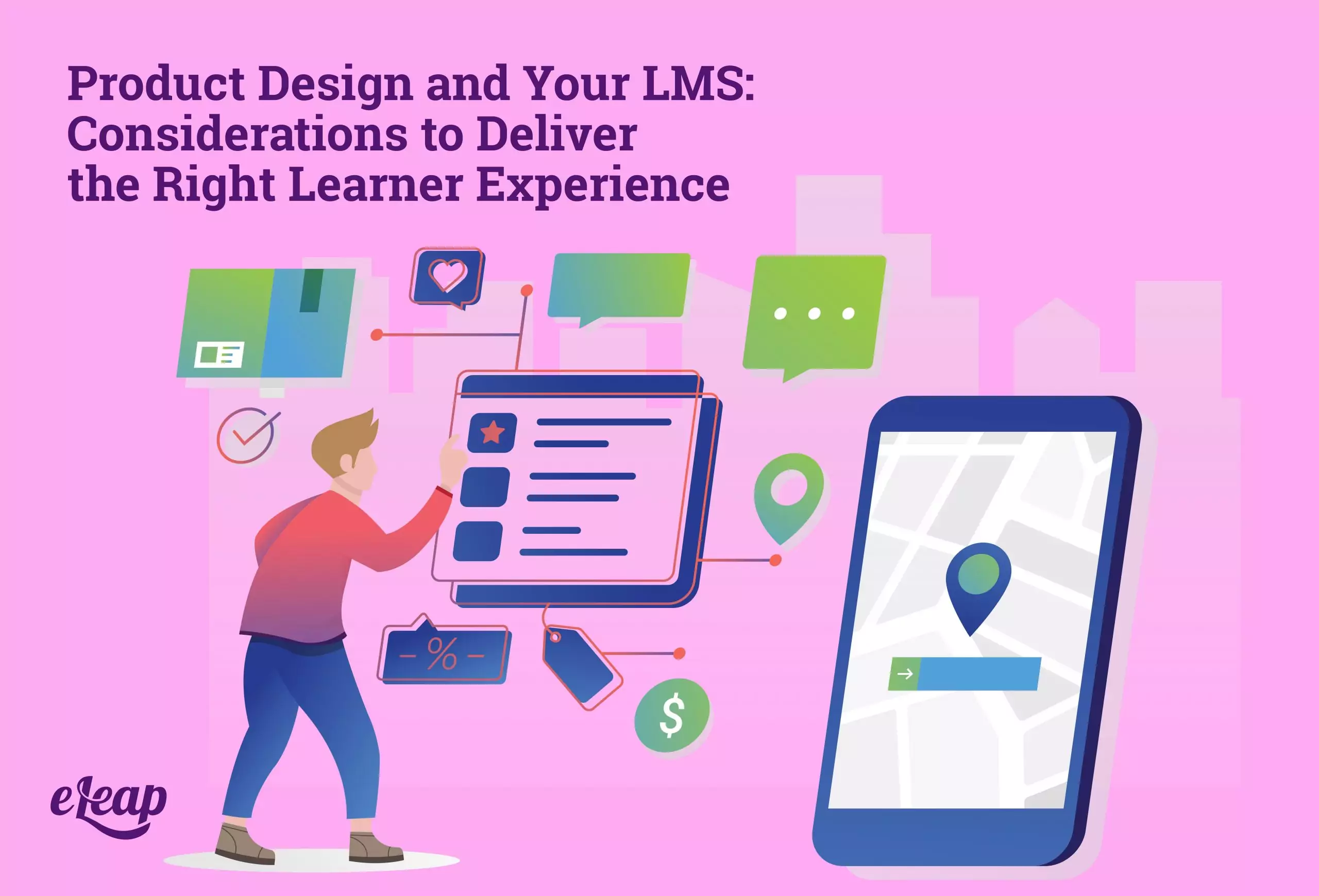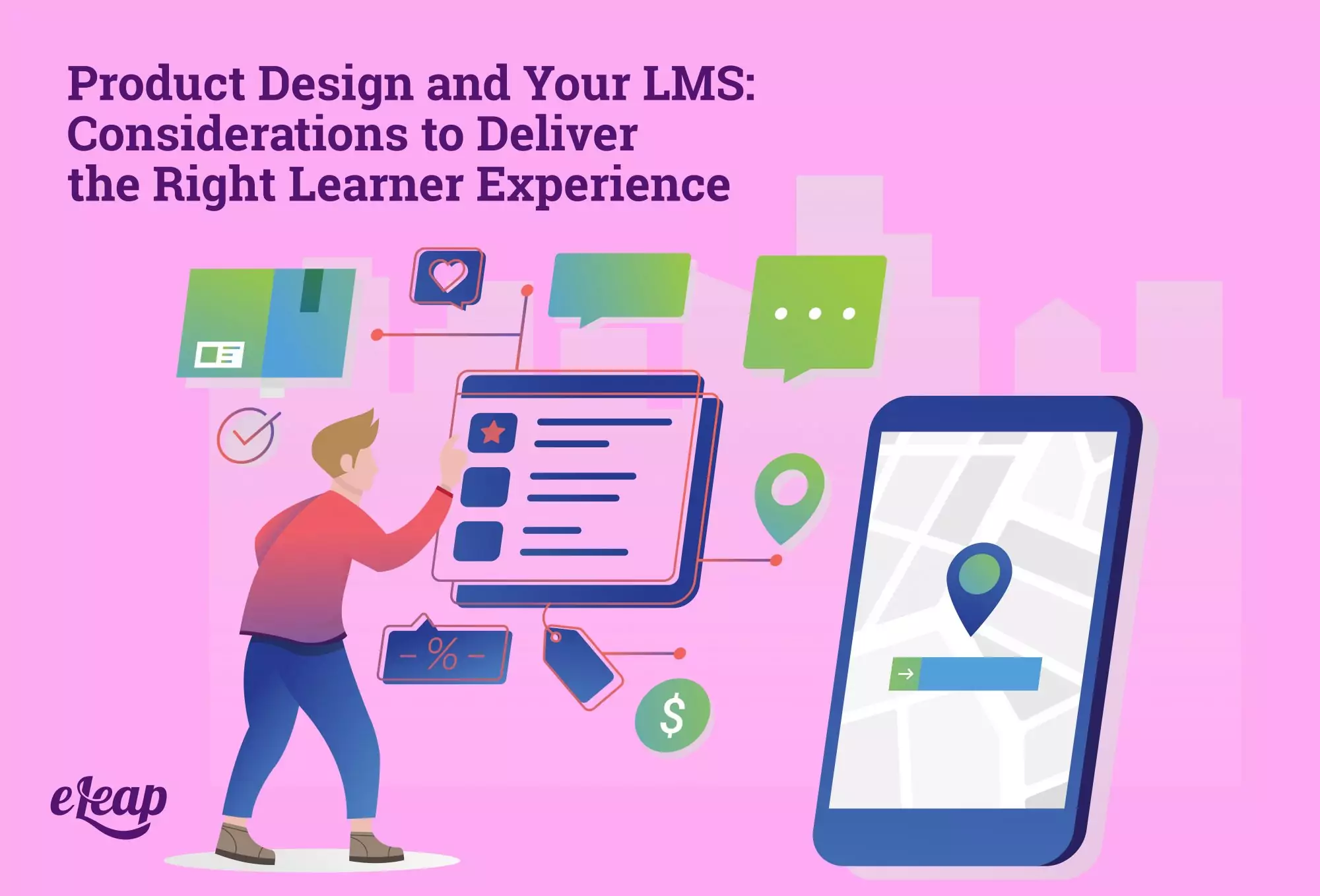Product Design and Your LMS: Considerations to Deliver the Right Learner Experience

When you think about your learning management system (LMS), what do you see? Is it a place where learners come to build their skills and knowledge? Or is it just another tool to help propel business success? The truth is that your LMS can be a powerful aid in closing skill gaps, creating better employee engagement, and even attracting and retaining top talent. However, to achieve those lofty goals, you’ll need the right product design.

What Is Product Design?
Product design applies to every single thing designed for use by others, from your LMS to Apple’s latest AirPods. Tangible or intangible, product design is a critical consideration for many different reasons. When it comes to your learning management system, the most important reason to pay attention to the overall design is the ultimate user experience your learners will receive.
A good design will offer a positive, streamlined, seamless experience that makes learning the focus while helping your learners move from module to module without effort. A bad design, on the other hand, creates difficulty and strife. It hampers the learning experience, makes it harder to move from module to module, and ultimately causes a disconnect with your learners that could short-circuit your entire L&D initiative.
Why LMS Design Matters for Learners and Backend Users
If you’re on the hunt for a new LMS (or your first LMS), chances are good you’ve defined some pretty critical needs. These might include the right pricing structure, detailed reporting capabilities, 24/7 support, and much more. However, how much thought have you given to the user experience the LMS delivers?
When it comes to LMS user experience, it matters for both front and backend users. Learners need the support and ease of use that only comes with an intuitive layout and design, but your HR and admin teams will also benefit from the right design.
Think of it this way – your eLearning team is responsible for developing content and then deploying it and monitoring learner progress through it. Their ability to do that hinges on the design and functionality of the LMS you choose. The wrong design could impede data import/export, lead to mobile accessibility problems, and cause other problems that ultimately devalue your L&D efforts.
What You Should Know about LMS Design
You will need to make quite a few considerations when it comes to product design specifications for your LMS, but we will discuss several of the most critical below.
Your Learners
Perhaps the single-most-important consideration when designing a learning management system is your audience. Who will be using it? Obviously, an LMS designed for elementary school students will differ drastically from one designed for adult learners, but what about within the world of corporate eLearning? How do audience differences affect LMS design for employees?
There are a few immediate things that affect design when it comes to employees using your LMS, including:
- The ability to connect to learning material from mobile devices
- The ability to connect to the LMS from their home Internet (which may or may not be of similar quality/speed to their work connection)
- The ability to pause modules to take care of work or life responsibilities
However, it goes deeper than the usability considerations. You also need to consider things like what your audience expects when they log into the system. How easy is it to navigate? Are the buttons and controls clearly labeled? Does it offer a logical means of finding content and/or progressing through modules? Can learners see at a glance where they stand in terms of training completion?
If you are creating your own LMS, you will need to design with these things in mind. However, if you’re choosing an LMS from a third-party developer, you’ll want to verify that it is a good fit for your learners.
Does It Play Nice?
Businesses today rely on a broad range of technologies. Chances are good that you have a CRM system, that you use an office suite, such as Microsoft Office, and that you use a broad range of other tools, too. Your LMS should integrate directly with those tools, providing a seamless experience for learners.
For instance, when a learner logs into the network, can they move directly to the LMS without taking multiple steps? Does the move feel disjointed or disconnected? Does the LMS share the same branding and design elements as other parts of your network?
It’s really all about making sure that learners have a cohesive experience and that data can be exported directly from the LMS for use in other situations. Information (and users) should flow smoothly to and from the learning management system without roadblocks, bottlenecks, or other hurdles.
Is It Consistent?
Your LMS should tie into your brand’s design language, but it must do that in ways that support the user experience (both learners and back-end users). Buttons, links, and other controls should be consistent throughout the LMS to help ensure familiarity and ease of use. Ideally, the LMS you choose will be completely customizable to your branding needs.
Personalize the Access Experience
While all learners should access the LMS in the same way, the overall LMS experience should be personalized to each learner. This ensures that when they log in, they’re presented with the most relevant content for their needs. You can personalize their experience in a couple of ways, including using the information you currently possess, such as module completion, score, and career path. You should also allow users to customize their experience to some extent, such as choosing interests or prioritizing certain types of content.
The Right User Experience Is Powerful
Your LMS is a vital tool. However, without the right design, the user experience will be subpar. You cannot afford to sacrifice that. User experience is a powerful driver of outcomes, whether positive or negative. So, do your due diligence, design with an eye toward both learner and back-end user needs, and ensure that your LMS offers a seamless, positive experience that encourages engagement.